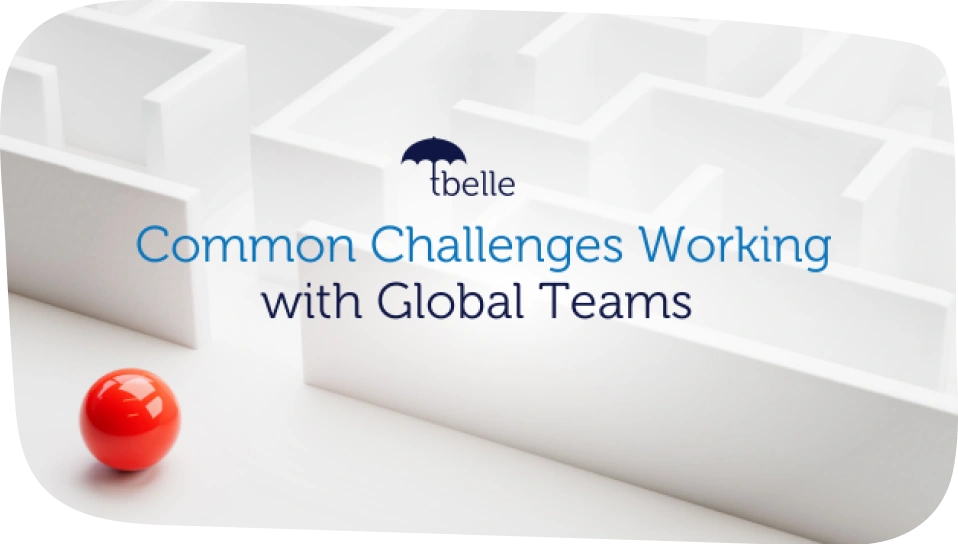
Remote work has significantly transformed traditional work set-ups but has allowed companies to access a broader talent pool, tapping into diverse skills and perspectives worldwide.
However, managing global teams presents challenges, especially employees feeling disconnected from the company. This issue is further exacerbated by many factors including:
The concept of Workforce Integration emerges as a solution, aiming to foster a cohesive and motivated team through intentional onboarding, enhanced communication, and supportive management practices. More solutions backed up by studies and insights are explained below.
Did you Know?
According to Business Harvard Review, 89% of surveyed corporate employees serve on at least one global team.
Global teams in today’s business environment defies cross-cultural boundaries leveraging diverse talents and driving innovation across organizations. As companies continue to expand their reach, the ability to effectively manage and integrate these global teams is crucial for maintaining competitive advantage and fostering a cohesive corporate culture.
In this article, we explore the common challenges associated with working with global talent, and highlight how Workforce Integration can be the key solution to fostering a more cohesive and collaborative work environment.
Understanding the Global Talent Framework

Understanding the global talent framework involves recognizing the dynamic and interconnected nature of today’s workforce. As mentioned by Deloitte in their 2024 Global Human Capital Trends insights, we’re now in a world where work is not confined to specific jobs, the workplace isn’t tied to a particular location, many workers are not traditional employees, and human resources is no longer a siloed function.
The concept of global talent encompasses the strategies and practices companies use to recruit, manage, and integrate talent from around the world. As businesses increasingly rely on remote work, they can tap into a wider pool of skills and expertise, regardless of geographic location.
Tbelle Insight:
A survey revealed that 16% of companies globally are fully remote.
As remote and hybrid work models become more prevalent, companies are recognizing the need to adapt their policies and technologies to support a distributed workforce. A report from Owl Labs surveyed in 6 continents revealed that 16% of companies are fully remote.
This shift towards flexible working not only enhances employee satisfaction and productivity but also allows businesses to access a broader talent pool, further emphasizing the global trend towards a more flexible and inclusive work environment.
Common Challenges in Global Talent Management
Managing a global talent pool comes with its unique set of challenges. According to a study called Global Leadership Forecast, only 18 percent of multinational corporations feel they have a strong leadership pipeline in place to meet future business challenges, on a global basis.
These challenges, if not addressed, can lead to a significant disconnection. Understanding and proactively managing these obstacles is crucial for businesses seeking to harness the full potential of their global teams.
The feeling of isolation is a significant challenge when managing global talent, as remote employees can often feel disconnected from the main activities and culture of the organization. According to a survey from Blink, 37% of frontline workers feel less valued than colleagues in desk-based jobs.
This issue arises because many companies centralize information on internal systems primarily accessible on-site, resulting in remote workers missing out on important updates.
A survey from Salesforce reports that 86% of executives attribute company failures to poor communication.
Inconvenient communication channels and the lack of centralized project management tools disrupt the flow of information, leading to delays in responses and increased effort in finding and sharing information.

According to a survey, over 50% of organizations are enhancing their business processes because they recognize that businesses perform better when their processes are aligned. Without setting the right guidelines, there is an increased risk of miscommunication and ineffective collaboration.
Onshore companies may prioritize training for local employees due to logistical challenges, which complicate the inclusion of offshore staff in on-site training sessions. Limited access to opportunities hinders employee growth, leading to skill gaps, reduced productivity, and decreased innovation.
Companies need to elevate personal purpose and values to significantly drive organizational success. A study by Gartner reports that 82% of the surveyed employees say it’s important for their organization to see them as a person, not just an employee.
Low engaged employees lowers productivity. In global teams, geographical separation can impede trust and camaraderie, further lowering engagement levels.

This is when managers are not confident that their teams are being productive in hybrid-working environments. This productivity paranoia, according to a Microsoft report can drastically undermine trust, lead to increased stress and ‘productivity theatre’ where employees aim to prove they’re working harder.
This disconnection means that remote employees feel isolated or detached from the values, norms, and social dynamics of the organization. This can occur due to the lack of in-person interactions, limited opportunities for casual conversations, and challenges in participating in cultural and team-building activities.
‘Water cooler moments’ are the informal chats that happen spontaneously in the workplace. Leaders of international teams need to play a more active role in helping their teams achieve these results without these physical moments.
Without face to face connection with colleagues, remote work can make coworkers seem two-dimensional, leading to more transactional relationships.
These differences make it challenging to coordinate meetings and collaborative efforts, leading to delays, reduced efficiency, and difficulties in maintaining consistent communication and project progress.
The Concept of Workforce Integration

Workforce integration is the deliberate process of bringing together and synchronizing different elements of an organization’s workforce. This is where leaders collaborate and work across traditional boundaries to support individuals.
How Workforce Integration Stands Out
Workforce Integration, immerses new hires in the company’s culture, values, and way of working.
Workforce Integration prioritizes initiatives that motivate employees to connect on a deeper level
It recognizes the importance of creating a positive and supportive work environment.
Workforce Integration emphasizes the broader impact of collective output on society, the company’s purpose, and personal goals.
Solving Disconnection at Work Through Workforce Integration
Here are the ways that highlight why Workforce Integration is essential for every organization:
In workforce integration, organizations are encouraged to develop an immersive onboarding program that immerses new hires in the company’s culture and values.
A Deloitte article reveals that effective workforce planning has led to a 10% increase in productivity. Implement a comprehensive employee journey that includes orientation, development, upskilling, and retention.
Schedule regular team meetings and check-ins to foster communication and collaboration. According to a Salesforce report, there’s a 36% increase in time saved due to adopting collaboration tools. Utilize digital collaboration tools like Slack, Microsoft Teams, or Zoom to facilitate real-time communication and project management.

Leadership Training – Train leaders to effectively communicate the organization’s vision and purpose, and to develop empathy, communication, and support skills.
Team-Building Activities – Organize virtual and in-person team-building activities that focus on fostering relationships and trust among team members.
Incorporate the company’s vision and values into employee performance assessments to ensure alignment with the organization’s mission. Ensure that all employees understand how their work contributes to the organization’s goals and their personal fulfillment.
Supportive Work Environment – Provide resources and opportunities that enhance job satisfaction, professional growth, and work-life balance. Consider the physical, emotional, and professional well-being of employees to cultivate a loyal and motivated workforce.
Address Connection Blockers – Identify and address organizational policies, and cultural norms that hinder connection. Promoting a culture that respects and values diverse backgrounds and perspectives will greatly contribute to this effort.
Tbelle Insight:
According to a Cross-Cultural Training and Workplace Performance report, around 70% stated that cross-cultural training had greatly improved their understanding of cultural diversity issues and cultural self-awareness.
Continuously measure the Quality of Connection within the team to assess relationships, sense of community, and alignment with organizational goals, and implement feedback mechanisms to identify areas for improvement and develop targeted strategies to enhance engagement.
Incentivizing Connection – Provide incentives for leaders who successfully enhance team cohesion and connection.
Regular Assessments and Improvements – Conduct regular assessments of workforce integration strategies and their impact on employee engagement.
Tbelle Insight:
A Gallup study found that teams receiving frequent feedback show a 12.5% increase in productivity.
Being open to adapt and evolve strategies based on feedback and changing organizational needs will also help carry out your workforce integration initiatives.
Key Takeaways
- Transformation of the Work Set-up and Challenges
The shift towards remote work has greatly transformed traditional business models, enabling them to access diverse skills globally.
- Challenges in Global Talent Management
Leaders must address challenges including communication barriers, cultural differences, time zone discrepancies, and feelings of disconnection among employees.
- Importance of Workforce Integration
Workforce Integration is essential for building a cohesive and motivated team. It involves intentional onboarding, enhanced communication, supportive management practices, and aligning employees with organizational values.
- Strategies for Effective Global Team Management
Regular virtual meetings, the use of collaboration tools, and promoting deeper connections are crucial strategies for managing global teams effectively.
- Addressing Disconnection from Company Culture
Efforts to recreate informal interactions and ensure all employees feel connected to the company’s culture and values are vital in a remote work environment.










